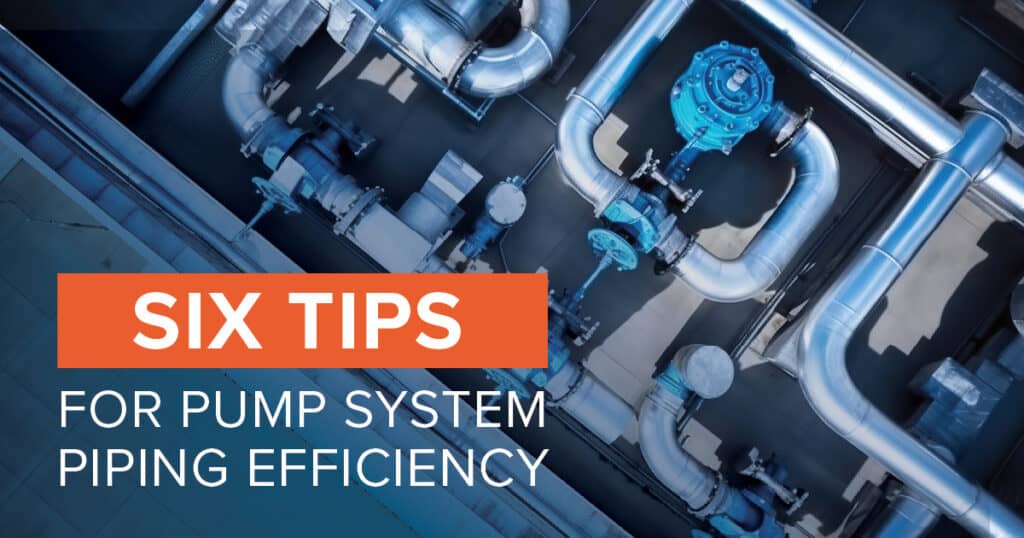If you’re looking to optimize your pump system, it goes well beyond the equipment you’re using. Many aspects of the line need to be analyzed and properly designed for maximum flow and energy efficiency. One of the most overlooked issues is often the piping itself. Is your piping system designed and built to achieve the best possible flow results?
Bad piping can lead to turbulence, backups, clogs, and fluid leaks. You can lose flow pressure, cause damage to the equipment, and develop problems further down the line. Below are six tips to optimize your pump’s piping configuration:
- Use the Right Pipe Diameter
This is easily the most important factor to consider when designing a piping system. Pipes that are too wide cost more than they are worth to purchase and install. They may slow down flow too much or impact suction pressure because there is simply too much extra space. Pipes that are too narrow in diameter generate higher friction and velocity, which typically leads to head loss and other system issues. Consider both the initial costs of your piping and all the measurable factors that determine the ideal pipe diameter (flow rate, head, energy consumption, etc.).
- Use the Correct Size Valves
In addition to the pipe diameter, make sure to use the correct valve sizes. An undersized valve can create high energy or friction loss. This is a common mistake when system designers add excessive safety margins with valves. Valves should be able to handle maximum system flow and be fitted for proper performance within the piping system.
- Aim to Achieve Uniform Flow
Most industrial pumps perform their best when there is a uniform flow traveling into and out of the pump itself. The piping configuration plays a significant role in this. The ideal solution should achieve a more uniform flow rate for a smoother transfer of energy. Inconsistent flow may lead to surges and excess vibrations, which can damage the pump, the pipe fittings, and supports. Pay close attention to piping elbows and angles to achieve consistent upstream and downstream fluid flow.
- The Straighter the Better
In general, the fewer bends and angles you have in your piping system, the more efficiently it will flow. Space is often the biggest constraint here as you may be limited by the area in which your pump and pipes are installed. Do everything you can to maximize straighter pipe segments and minimize sharp turns that disrupt flow. Smooth transitions as much as possible. Use valves and other system configuration components to maximize your space.
- Identify the Possible Problems
Whether you’re looking to update and optimize an existing pump’s piping system or designing a new pipe layout for installation, consider the potential problems first. Odds are you already know some of the key issues if it is an existing system that isn’t operating efficiently. Identify those problems and make design adjustments to rectify them. With a new piping system, you have to be more predictive in your approach. Understand the pump equipment and what kind of piping system offers the best results. Avoid common pump system problems like air and vapor entrapment, vortex formation, leakage, backflow, and clogs.
- Don’t Overlook the Support Structure
A critical element of any quality piping system is the support structures. Weak supports can lead to misalignments and unnecessary movement within the pipes. Obviously, piping and shaft alignment with the pump are extremely important. Design the proper support structure for your piping, and check fittings regularly to keep everything secure and aligned at all times.
These are a few ways you can optimize your pump’s piping system for better performance, extended equipment life span, consistent flow, and maximum energy efficiency. For all your pump system configuration, optimization, and custom design needs, count on the team at DXP Pacific. Contact us today to learn more.

